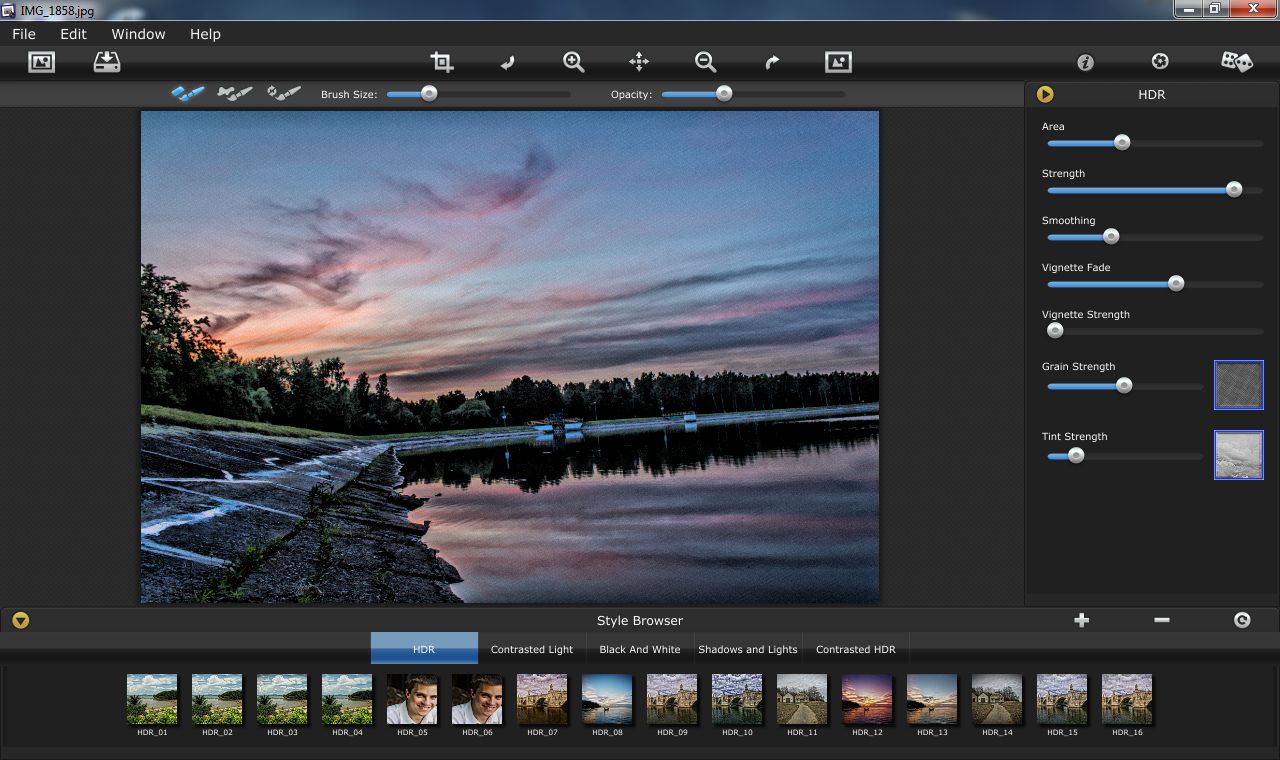

If you are using more than two images, a portion of the next layer(s) down will also need to have sections made transparent. This allows the image from the next layer down show through.

Then hide/erase/mask/make transparent the portion of the top layer you do not want showing, ideally, using layer masks. To make this process easy, I use Adobe Bridge to select my images and then use the "Tools/Photoshop/Load Files into Photoshop Layers" menu option. Load your images into layers in your application as shown above. Photoshop is the famous image editing option that includes layers and is what I'm going to use in this example. You simply need an application that supports layers (DPP does not).
#Simply hdr key software#
HDR processing of course requires imaging software.Ĭanon's Digital Photo Pro, Photoshop and MANY other software applications including many HDR-dedicated applications are available with the HDR feature.īut, I'm not going to use a prescribed HDR feature. I reduced this image by two stops in Canon's Digital Photo Pro. Twenty seconds was long enough to create a strong blur in the water but not too long that the brightest portion of the water would be overexposed. The +4 stops exposure was captured at 20 seconds (again at f/11). The properly exposed image was captured at 1.3 seconds at f/11. Here are my base images along with the 2-stop reduced version of the plus-4-stop image.Īnd I'll jump ahead by showing you a pair of finished HDR images to share the target of this processing. The brightest portion of the water was approaching a blown highlight brightness.

In this example, I took the HDR technique a step further.īecause a longer exposure would add a motion blur effect to the water and because I had plenty of highlight headroom in that portion of the frame, I opted to significantly overexpose this image. The setting sun was delivering a very bright sky while the pier and other foreground elements were quite dark. My example subject is Barnegat Bay and a Hurricane Sandy-ravaged pier in Seaside Park, NJ. Two exposures varied by 1 to 3 stops are often adequate for HDR processing, but sometimes additional exposures are helpful. The brightest image should have adequate shadow detail in the darkest portion of the image and the darkest needs to have adequate highlight detail in the brightest portion. Some applications can align multiple handheld shots, but do so with a potential loss of resolution.Ĭapture enough exposure variations of the scene to give you plenty of options to work with. To get started with HDR processing, you need to pick the subject and take the pictures.īecause the multiple images must align perfectly, tripod-based shooting is very strongly recommended. HDR images look very difficult to create, and while some can be intensely so, great looking HDR images can also be very easy to create. While the look is fine for artistic uses (and I do like that look for some purposes), I am going for the natural look most of the time. Many HDR images being produced today look un-natural and many even look cartoonish. Sorry, but I need to say it up front: If it is obvious that you used an HDR technique for your image, I'm probably not going to like the image very much. Scenes that present a dynamic range beyond what the camera can handle are begging to be HDR'd.įor HDR use, capture one frame exposed for the bright areas and one frame for the dark areas.įrames covering additional brightness levels can also be captured if necessary – or for insurance. That sentence sounds complicated, but hang with me – the process does not have to be.Ĭameras are limited in their ability to capture detail in extreme wide ranges of brightness. The HDR (High Dynamic Range) image processing technique makes use of multiple images captured (or minimally, processed) at different brightness levels toĪvoid detail-less blown highlights (RGB values of 255,255,255) and blocked shadows (RGB values of 0,0,0) in the properly-adjusted final merged/blended/composited image. Natural-Looking HDR Images Can be Easy to Create

Sigma Delivers Short-Term Mother's Day Instant Savings Promotion.Canon Japan Teases New Vlog Product Announcement on May 11th.Save $10,000.00 (Over 50%) on the RED DIGITAL CINEMA DSMC2 DRAGON-X Camera Kit.Think Tank Photo Announces Speedtop 20 and 30 Magnetic Lid Backpacks.Updated: Canon RF 135mm F1.8 L IS USM Lens Review.
#Simply hdr key plus#


 0 kommentar(er)
0 kommentar(er)
